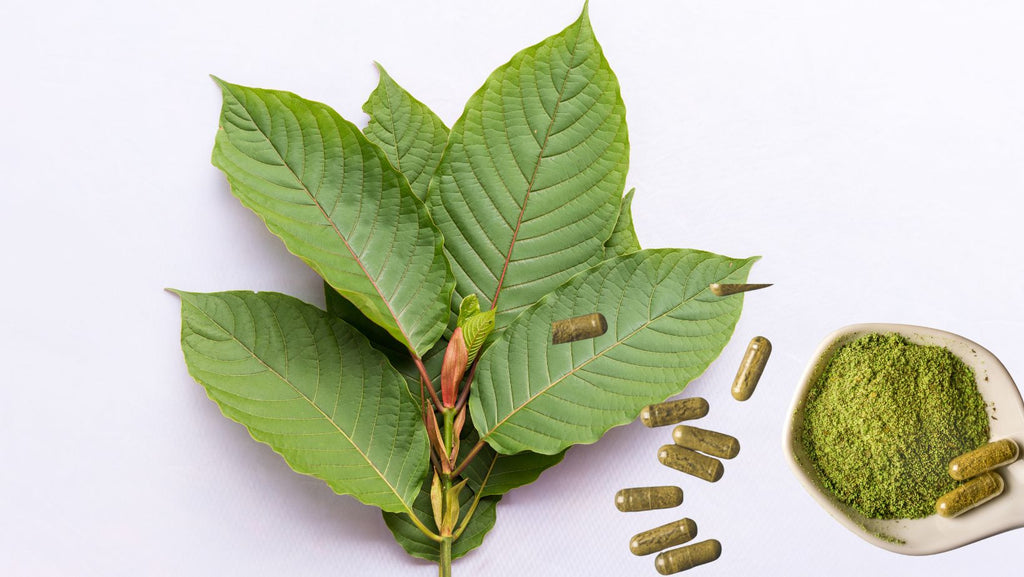
Growing Kratom 101: Full Guide
Explore our full guide on Growing Kratom, including how to grow and where does kratom grow, and some tips for successful cultivation.
Introduction to Growing Kratom: What You Need to Know
Kratom, scientifically known as Mitragyna speciosa, is a tropical tree native to Southeast Asia, primarily found in Thailand, Malaysia, and Indonesia.
Growing Kratom has gained popularity outside its native region due to its medicinal properties, which many users claim can help with pain relief, mood enhancement, and energy boosting. If you're considering growing Kratom, it's essential to understand its cultivation requirements and environmental preferences.
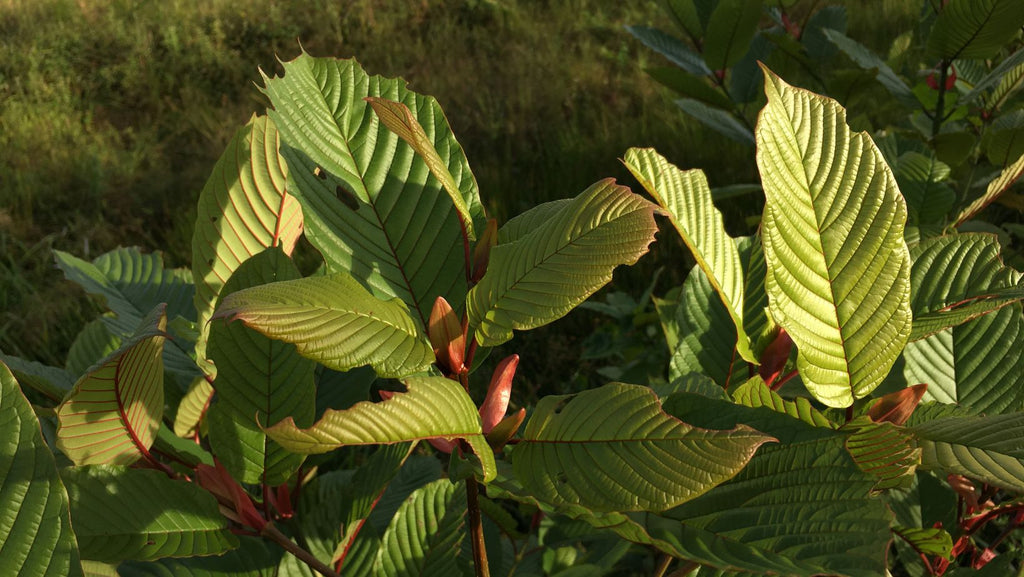
Kratom thrives in warm, humid environments and requires rich, fertile soil to grow effectively. It's a hardy tree that can reach heights of up to 50 feet in its natural habitat but can be maintained at a more manageable size in domestic cultivation.
The tree's growth and alkaloid production—responsible for its effects—are influenced by several factors including climate, soil type, and care practices.
Before diving into growing your own Kratom tree, you must also consider the legal status of Kratom in your area, as it is subject to regulation in various countries and states.
How to Grow Kratom: A Step-by-Step Guide
Growing Kratom can be a rewarding endeavor, but it requires patience and attention to detail. Here's a comprehensive step-by-step guide to help you get started:
Step 1: Sourcing Your Kratom Seeds or Cuttings
To grow Kratom, you first need to obtain high-quality seeds or cuttings. Seeds must be fresh to increase the likelihood of successful germination. Cuttings are another viable option, particularly for those looking to achieve a genetically identical plant to the parent tree.
Step 2: Germinating the Seeds
Kratom seeds are tiny and should be sown on the surface of a moist, nutrient-rich soil mix. Covering the seeds with a thin layer of soil can protect them but avoid burying them deeply. Consistent moisture and warmth are crucial during this stage, so keep the soil damp and maintain a temperature of about 70-90°F.
Step 3: Providing Optimal Light and Temperature
Once your seedlings emerge, they will need plenty of light and a stable warm temperature. If growing indoors, a grow light can offer the necessary intensity. Kratom prefers temperatures between 75-85°F with high humidity. Consider using a humidifier to maintain these conditions, especially in dryer environments.
Step 4: Watering and Nutrition
Kratom plants require ample watering, but it is essential to let the soil slightly dry between waterings to prevent root rot. The use of well-draining soil is crucial. Feed your Kratom plant with a balanced, slow-release fertilizer that enriches the soil without overwhelming your plant with nutrients.
Step 5: Pruning and Maintenance
As your Kratom tree grows, regular pruning can help manage its size and encourage bushier growth. This practice also improves airflow around and through the plant, reducing the risk of fungal diseases. Remove any dead or dying leaves to keep the plant healthy and well-groomed.
Step 6: Monitoring for Pests and Diseases
Keep an eye out for pests such as aphids and spider mites, which can be common in warmer climates. Use organic pesticides if necessary, and always try to identify and treat infestations early to prevent them from spreading.
Step 7: Harvesting Your Kratom
Kratom leaves can be harvested as soon as they become mature and fully developed, usually within a year of planting. The best time to harvest is when the leaves are rich in alkaloids, often indicated by darker veins. Leaves are typically dried and then crushed or powdered for use.
Optimal Conditions: Where Does Kratom Grow Best?
Kratom is naturally suited to the hot, humid, tropical climate of Southeast Asia, where it thrives in the dense rainforests. The optimal conditions for Kratom involve temperatures that consistently stay above 60 degrees Fahrenheit, with a high level of humidity, typically between 70% and 90%.
This environment supports the tree’s growth and the development of its active alkaloids, which are the compounds responsible for its effects.
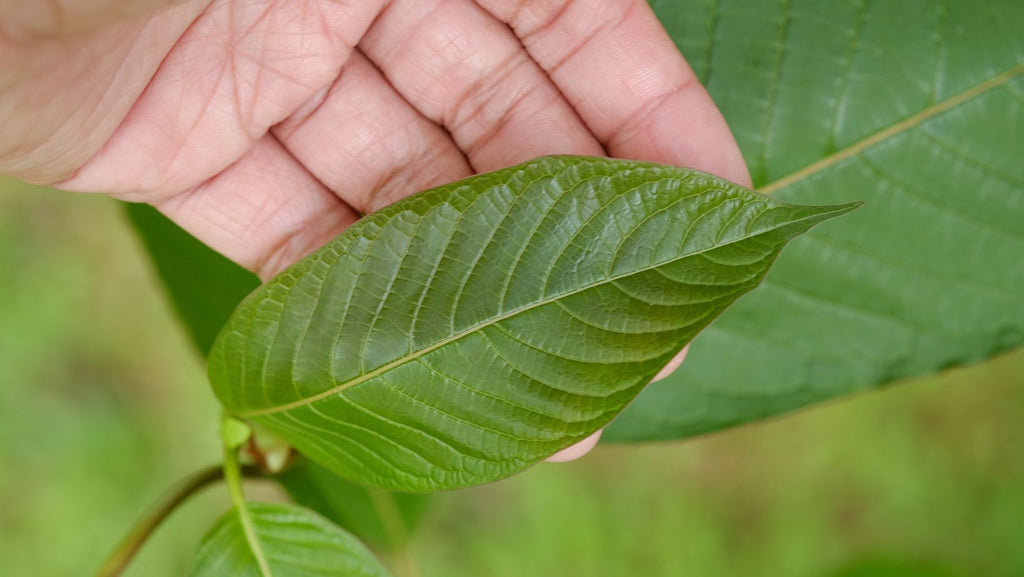
In addition to temperature and humidity, Kratom requires well-drained soil rich in nutrients. The soil should maintain moisture without becoming waterlogged, as stagnant water can lead to root diseases.
A pH level of slightly acidic to neutral (5.5 to 6.5) is ideal for the best growth. If you are considering growing Kratom outside its native range, replicating these conditions as closely as possible will be key to your success.
Key Considerations for Optimal Growth:
- Consistent Warmth: Temperatures should remain above 60°F, ideally between 70-90°F.
- High Humidity: Maintain 70-90% humidity to replicate Kratom's tropical habitat.
- Well-Drained Soil: Ensure soil is rich but allows water to drain to avoid root rot.
- Slightly Acidic pH: Aim for a soil pH between 5.5 and 6.5.
- Nutrient-Rich Environment: Fertilize soil to provide the necessary nutrients for growth.
- Protection from Elements: If grown outside native areas, protect plants from cold and excessive wind.
- Adequate Sunlight: Ensure Kratom receives sufficient daily sunlight or artificial light mimicking the sun’s spectrum.
Choosing the Right Environment for Growing Kratom
When planning to grow Kratom, choosing the right environment is crucial, whether indoors or outdoors. If you live in a climate similar to Southeast Asia’s tropical forests, you might consider outdoor cultivation.
However, for most enthusiasts living in cooler or less humid climates, creating an indoor environment that can control temperature and humidity is essential.
For indoor growth, a greenhouse is ideal as it can maintain a consistent tropical climate while protecting the plants from external temperature fluctuations and pests. Adequate ventilation is necessary to prevent the buildup of too much humidity, which can encourage fungal growth.
Supplemental heating and humidification might be required during colder months to mimic Kratom’s native environment effectively.
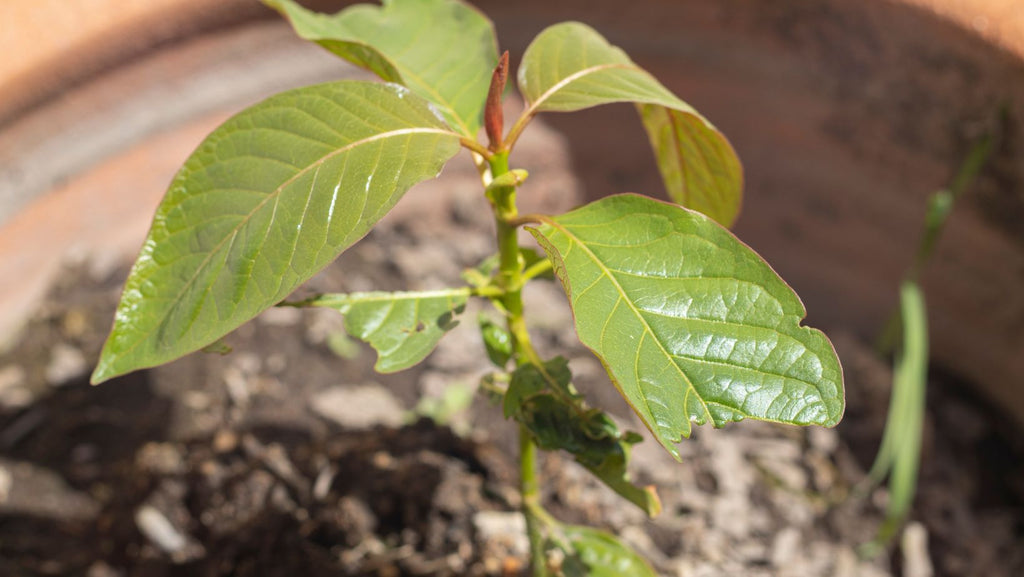
Key Considerations for Environment:
- Sunlight Exposure: Kratom requires ample sunlight or artificial light that mimics the sun’s spectrum. Aim for at least 6 hours of sunlight per day.
- Air Circulation: Good air circulation helps prevent diseases. Use fans if growing indoors to ensure movement of air.
- Temperature Control: Maintain an indoor temperature between 70-90°F. Use heating mats under seed trays if necessary.
- Humidity Levels: Keep the humidity high, around 70-90%. Use a room humidifier or mist plants frequently.
- Soil Quality: Use rich, fertile soil that is well-draining. Amend with perlite or vermiculite to improve drainage if needed.
- Watering Routine: Water plants deeply but allow the soil to dry slightly between waterings to avoid root rot.
- Fertilization: Feed with a balanced, slow-release fertilizer that is not too high in nitrogen to promote healthy growth without burning the plant.
Common Challenges in Growing Kratom and How to Overcome Them
Growing Kratom involves several challenges that can impact the health and productivity of the plants. Here are some of the most common challenges, each detailed under its own subheading with solutions to help you overcome them.
Challenge 1: Adapting to Non-Tropical Climates
Solution: Kratom naturally thrives in tropical environments, which means maintaining high humidity and warm temperatures is essential when growing it in non-tropical climates.
To successfully cultivate Kratom in cooler or drier areas, consider growing it indoors where you can control environmental factors. Use humidifiers to increase humidity, heating mats or space heaters to maintain adequate warmth, and grow lights if natural sunlight is insufficient.
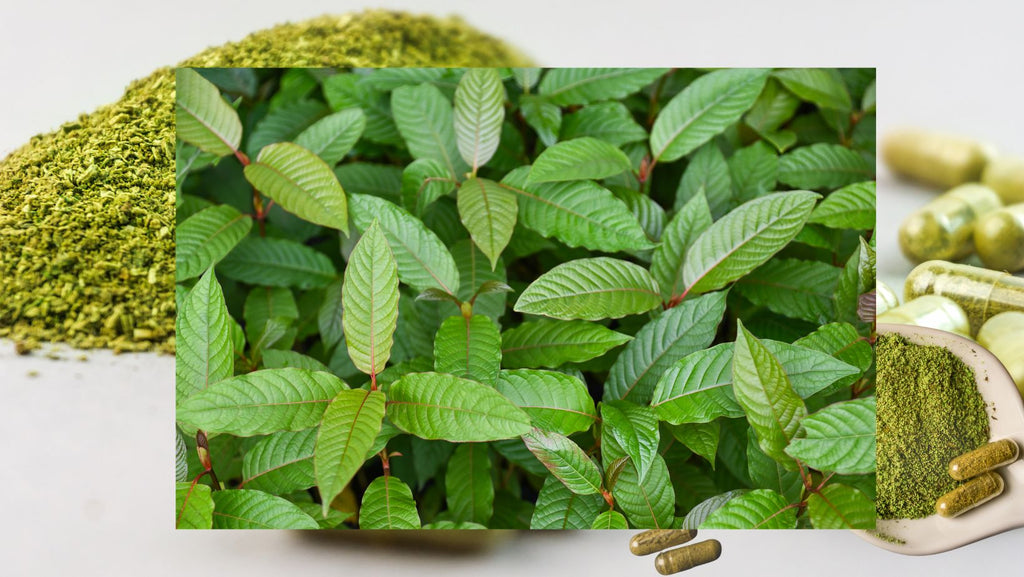
Challenge 2: Ensuring Soil Quality
Solution: Kratom requires fertile, well-draining soil to prevent root rot and other water-related issues. If the native soil is not ideal, it's advisable to use a high-quality potting mix combined with perlite or vermiculite for enhanced drainage.
Regularly adding organic compost can also enrich the soil with necessary nutrients, promoting healthier growth.
Challenge 3: Managing Water Properly
Solution: Proper water management is crucial to prevent overwatering and under-watering. Kratom plants need consistent moisture, but the soil should not be waterlogged.
Establish a watering routine that allows the soil to dry out slightly between waterings. Monitoring the moisture level of the soil can be done with a simple finger test or using a soil moisture meter.
Challenge 4: Controlling Pests and Diseases
Solution: Pests and diseases can hinder Kratom growth significantly. Regularly inspect plants for signs of infestation or illness, such as discolored leaves, stunted growth, or visible pests.
Treat infestations early with organic pesticides or neem oil, which are safer for the plant and the environment. Ensure good air circulation around the plants to reduce the risk of fungal infections.
Challenge 5: Navigating Legal Restrictions
Solution: The legality of growing Kratom varies by region, so it's vital to understand and comply with local regulations. Stay informed about current laws and any legislative changes that might affect Kratom cultivation in your area.
Consulting with a legal expert can provide guidance and help avoid legal complications related to growing or possessing Kratom.
Is it Legal to Grow Kratom? Understanding Different States
The legality of growing Kratom varies significantly across the United States, driven by diverse state laws that reflect varying levels of concern and regulation.
While some states embrace Kratom under specific regulatory frameworks, others have imposed strict prohibitions due to concerns over its effects and potential misuse.
Overview of State Regulations
- Utah: Utah supports Kratom under the Kratom Consumer Protection Act, which mandates that Kratom sold in the state meets specific safety and labeling standards. This law enables legal growth, sale, and use of Kratom.
- Georgia: Georgia has similar regulations to Utah, also under the Kratom Consumer Protection Act. The state ensures that Kratom is safe and properly labeled, making its cultivation legal as long as state guidelines are followed.
- Alabama: In Alabama, Kratom is illegal, classified as a Schedule I controlled substance, which prohibits its growth, sale, possession, or use.
- Colorado: In Colorado, Kratom is legal except in Denver, where the sale of Kratom for human consumption is specifically banned. Elsewhere in the state, it can be legally grown and sold.
- Indiana: Indiana has banned Kratom completely, including the growth, sale, and possession of the plant. It is one of the few states with a stringent policy against all Kratom products.
- Wisconsin: Like Indiana, Wisconsin has also banned Kratom, classifying it as a controlled substance. This makes growing Kratom illegal within the state.
- Arkansas: Arkansas treats Kratom as a controlled substance, placing it in the same category as other heavily regulated drugs. Growing Kratom in Arkansas is illegal.
- Tennessee: Initially, Tennessee had banned Kratom, but recent legal adjustments have made the status of Kratom more nuanced, allowing the use of pure Kratom (not synthetic forms) that is labeled and meets specific requirements.
These varied legal landscapes reflect differing levels of acceptance and regulation across the United States, highlighting the complexity of Kratom's legal status.
Comparative Table of Kratom Legality in Different States
Here's an updated table that includes additional states, providing a clearer picture of Kratom's legal status across a broader range of locations:
| State | Legal Status of Growing Kratom | Notes |
|---|---|---|
| Utah | Legal with regulation | Regulated under the Kratom Consumer Protection Act |
| Georgia | Legal with regulation | Regulated under the Kratom Consumer Protection Act |
| Alabama | Illegal | Classified as a Schedule I controlled substance |
| Colorado | Legal, except in Denver (restrictions apply) | Sale for human consumption prohibited in Denver |
| Indiana | Illegal | Kratom completely banned |
| Wisconsin | Illegal | Classified as a controlled substance |
| Arkansas | Illegal | Treated as a controlled substance |
| Tennessee | Legal with conditions | Pure Kratom allowed with proper labeling and requirements |
Share


